Shirley Corriher's Touch of Grace Biscuits
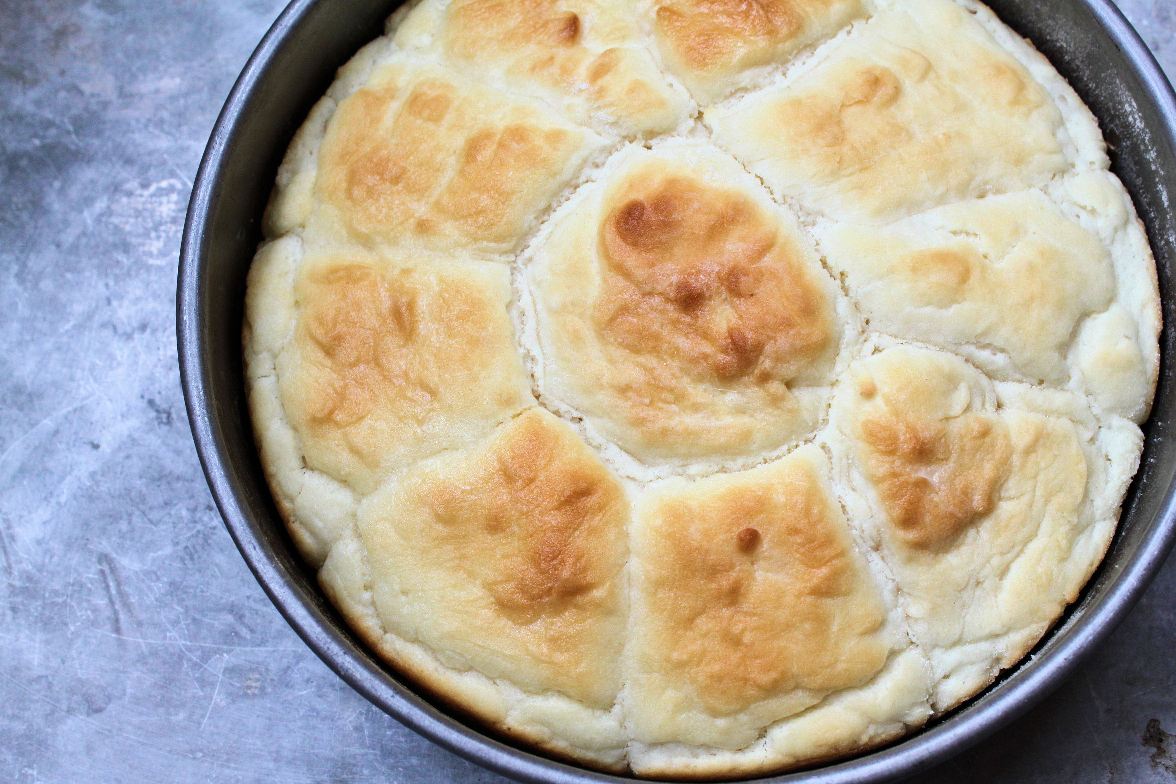 Okay, so there are biscuits, and then there are BISCUITS. Namely, these biscuits. Let's call it a biscuit recipe that changed my mind about a few things. That major, these biscuits. And I'm managing to tell you all about them just in time for Thanksgiving side dishing. Glorious!
Okay, so there are biscuits, and then there are BISCUITS. Namely, these biscuits. Let's call it a biscuit recipe that changed my mind about a few things. That major, these biscuits. And I'm managing to tell you all about them just in time for Thanksgiving side dishing. Glorious!
I made these biscuits on a whim after reading about them for years, both online and in one of my very favorite baking books. I'd never read anything but rave reviews about this particular biscuit recipe, I worship at the altar of Shirley Corriher, and I do so love biscuit baking of all sorts (one of those Farmer Wife/Pioneer Lady-type kitchen projects that just make you feel accomplished and nourished on all levels).
So why did it take so long to try this recipe? Well, I'll be real, here. Shortening. This recipes uses shortening. Not a lot, just 1/4 cup in the whole dang thing. But although I'm not some Staunch Anti-Shortening Person, I just never seem have it on hand, and whenever I'm faced with a recipe that calls for it, I almost always seek out a similar recipe that uses butter instead. Lord knows I've always got butter all up in the fridge over here. But the baker brain in me knows about the benefits of shortening in certain recipes--the tenderness and lift it gives is kind of unbeatable. There's just no scientific way around that noise.
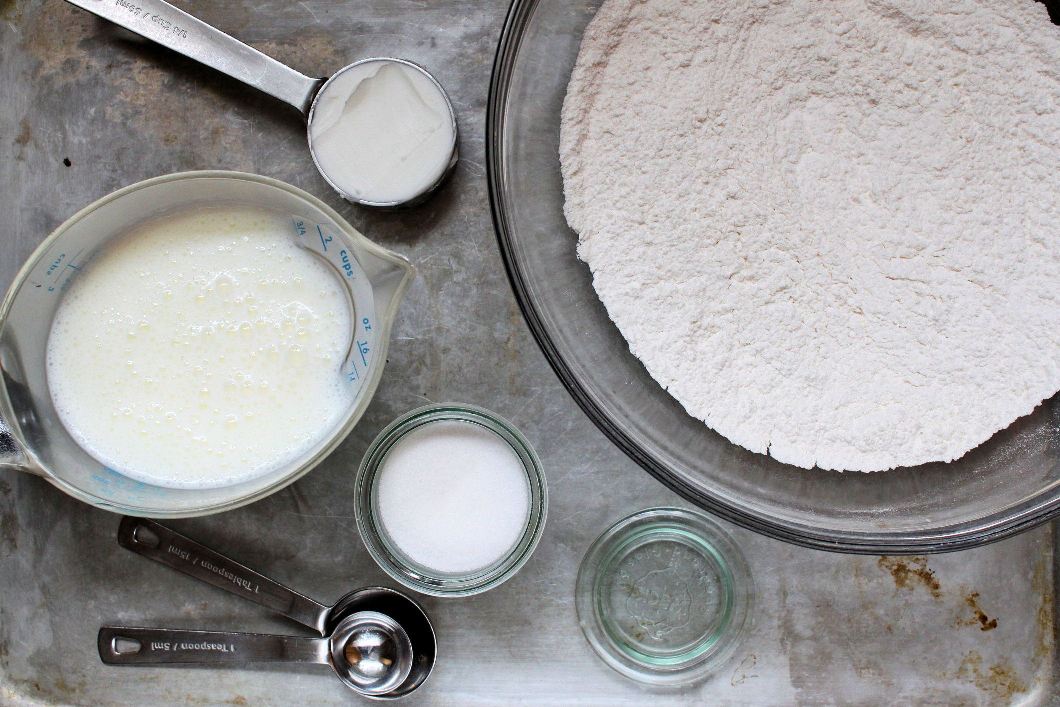
This year I got a little smart (or not smart, depending on how you really feel about shortening, I guess), and happened to grab a good-quality, trans fat-free shortening at a deep discount the other day, anticipating that I might run into a few holiday recipes that called for it here and there, and if I didn't use it all, it would keep for, like, 100 years in the refrigerator, right? Well, upon arriving home, I suddenly realized that with shortening in my hizzy, it was finally, finally about to be that time. Mmm-hmm. You know what I'm talking about, girrrrl. Touch of Grace Biscuit Time. Yeah!
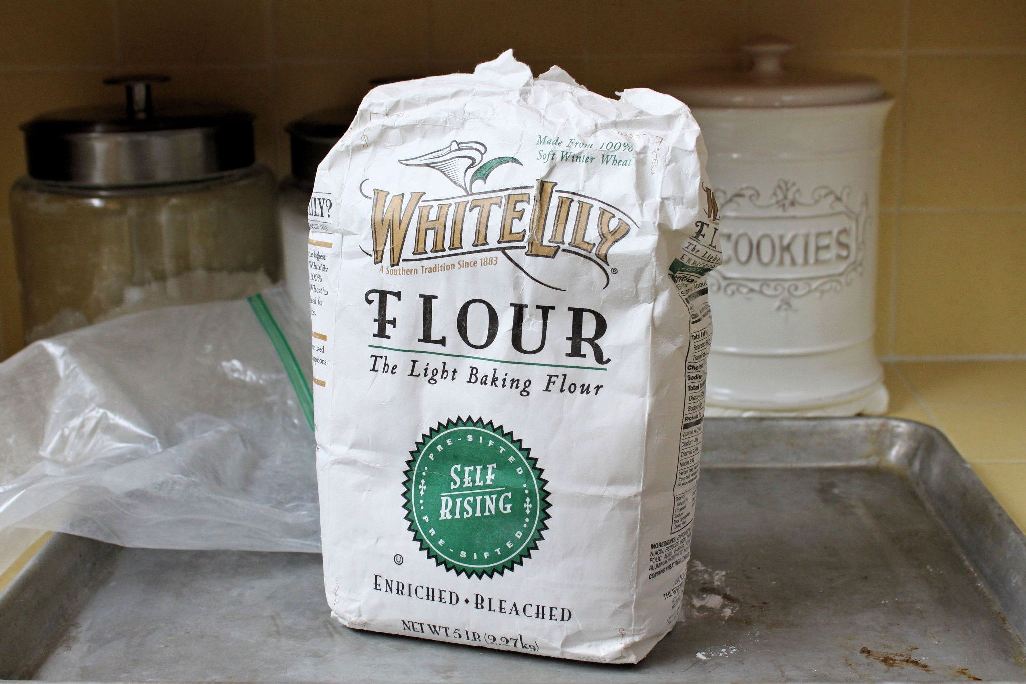
With the shortening issue out of the way, let's talk about a few other things that will kind of blow your mind and probably confuse you the first time you make this recipe. First, this recipe calls for self-rising flour, not all-purpose, and you might have to pick that up, too. Specifically, a low-protein flour, made from soft winter wheat, which is most easily found in the South, or online. In the rest of the country, all-purpose flour is likely made from hard winter wheat, is higher protein and can yield less tender biscuits. You can totally use regular all-purpose flour in this recipe, you'll just need a little more buttermilk and be extra careful not to mix the dough too much.
(Sidebar: In "Shauna is Certifiably Nuts" news, despite rarely having shortening on hand, I do keep a bag of White Lily Self-Rising Flour in a tightly zipped plastic bag in my freezer. I bought it while on vacation in the South at a Piggly Wiggly a while ago, and save it for special occasions like my husband's grandfather's famous hush puppies, or genius Southern-inspired things like Touch of Grace biscuits that really are designed to work with low-protein flour like White Lily. )
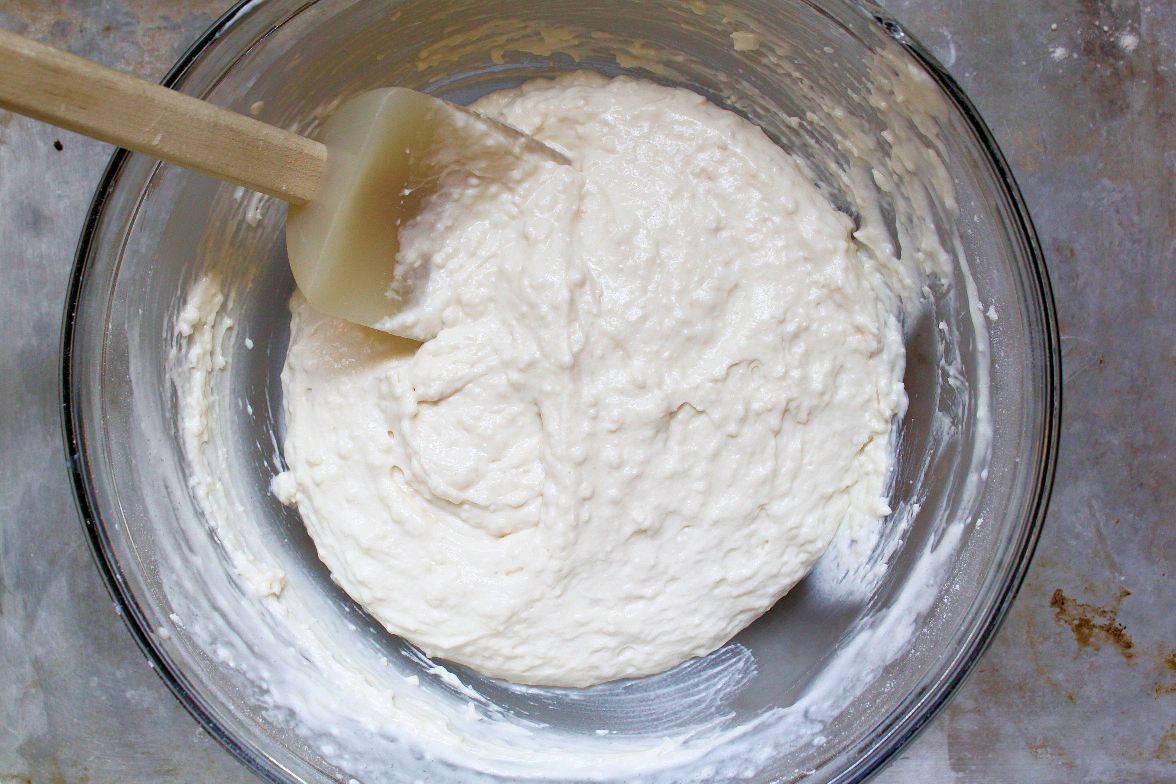
Second, this recipe creates the oddest consistency for biscuit dough, and you'll just have to have faith that it will all come together. "In Shirley We Trust", I said out loud to no one in particular, more than once, as I eyed the mixed-up goo that resembled cottage cheese, and was really more on the batter side of things than a dough. But the dollops of dough are dropped into a pie plate of flour, tossed gently to shape and coat them, and in the process they do become a bit sturdier, right before you plop them one my one into a greased cake pan, cramming them together to help them support each other as they rise. (I am sure there is a metaphor about humanity somewhere in there.)
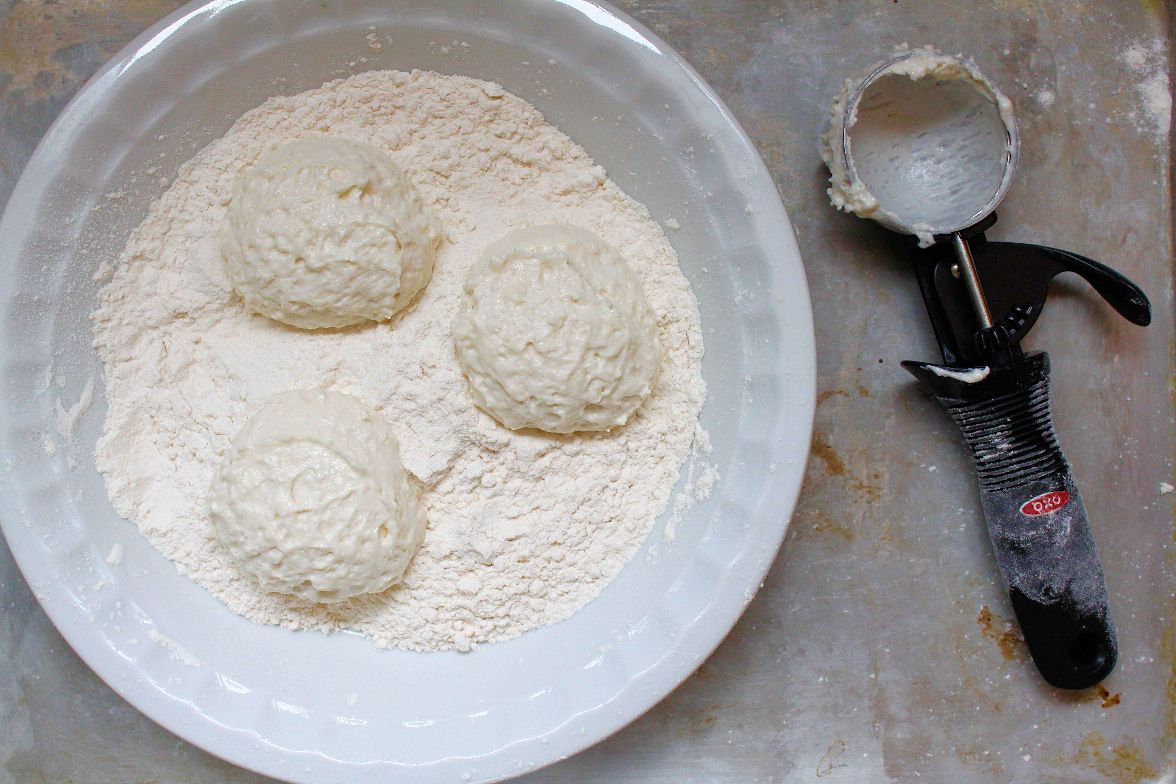
But in the end what you get here is a biscuit of heavenly proportions, mostly thanks to that questionably wet dough. In spite of a couple of the special- supermarket-trip ingredients and downright bizarre portioning and shaping business, the recipe really couldn't be simpler or come together faster. High return for very little work, here, people.
Know that we're not talking about those super lofty, layered dealios--these biscuits are not like the ones in the commercials that come out of a can that you can peel away at like the pages of a book--those require rolling and cutting and what not. Instead, these golden gems are basically the most pillowy, tender drop biscuit you've ever had--unbeatably light, a buttery, tender crust surrounding an almost cake-like interior. I die. So perfect for Thanksgiving and big celebratory dinners of all sorts. Happy Thanksgiving, lovely readers. Now go forth and make biscuits!
Touch of Grace Biscuits Adapted from Shirley Corriher's BakeWise
Makes 10-14 biscuits, depending on size
You can find White Lily Self-Rising Flour in Southern grocery stores, or online. If you opt to use regular all-purpose flour, you will probably need more buttermilk to create the loose dough you need here to yield feather-light biscuits--just be careful to mix lightly and not overwork the dough while you add more liquid--it should retain that sort of slightly lumpy, cottage cheese look while you mix.
Use a standard ice cream scoop (a little over 2 inches across) to portion out the dough. After you've dusted the dough balls with flour, really cram them close together as you load them into the pan--you shouldn't be able to see any spaces at all once all the biscuits are in, even around the outside of the pan. They'll be slightly irregular in shape, but that's part of the charm here. You can use an 8- or 9-inch cake pan for this recipe, but I recommend a 9-inch, because I had one biscuit worth of dough left over that I couldn't fit into the pan, and that was depressing.
Although the original recipe says to turn the hot biscuits right out onto a serving platter, I'd give them at least 10 to 15 minutes to cool and firm up a bit in the pan--they're so tender they could start to fall apart if you turn them out too soon.
2 cups low protein self-rising flour (such as White Lily), spooned and leveled 1/4 cup granulated sugar (I trimmed this to 3 tablespoons) 1/2 teaspoon salt 1/4 cup shortening 2/3 cup heavy cream 1 cup buttermilk 1 cup plain all-purpose flour, for shaping the biscuits 2 tablespoons unsalted butter, melted, for brushing the biscuits
Position a rack to the center of the oven and preheat it to 425°F. Spray an 8- or 9-inch round cake pan with nonstick cooking spray.
In a large mixing bowl, whisk together the flour, sugar, and salt. Add the shortening and work it into the dry ingredients with your fingertips until there are no large lumps. Combine the cream and buttermilk in a measuring cup. Add the liquid to the dry ingredients, stirring gently to blend. At this point, the dough will be sort of a wet mess, and should resemble cottage cheese, but won't be soupy, think a batter-ish dough. If you're not using a low-protein flour, you'll probably need to add a significant additional amount of buttermilk to reach the right consistency.
Spread the regular all-purpose flour out in a pie plate or baking dish. Using a standard sized ice cream scoop, portion out the dough 3 or 4 mounds at a time, and drop them right into the plate of flour. Sprinkle flour over each mound. Flour your hands well. Working one biscuit at a time, pick up a dough mound, and lightly shape it into a round, dusting it with flour as you toss the dough ball back and forth gently between your hands. Place the biscuits in the prepared pan as you work, fitting them snugly next to each other, leaving no space in between them. Continue scooping and shaping until all the dough is used.
Bake until lightly browned on top, about 20 to 25 minutes (I needed about five minutes more than this). Brush the tops of the hot biscuits with the melted butter. Let the biscuits cool in the pan for 10 to 15 minutes before inverting onto a serving place. Serve warm.